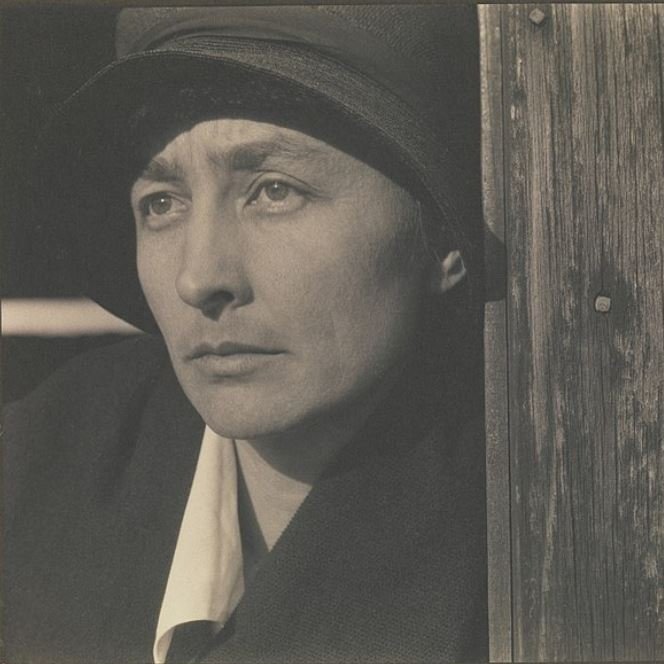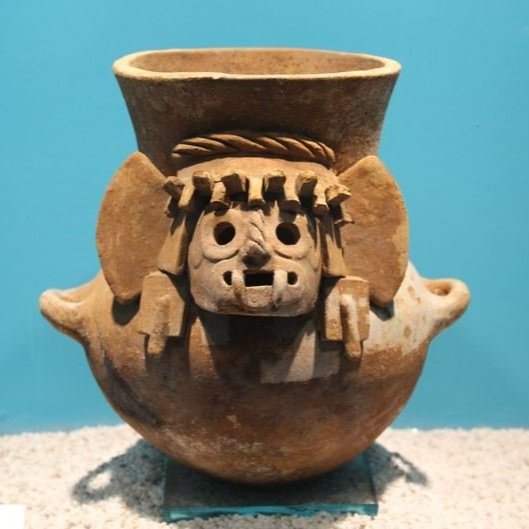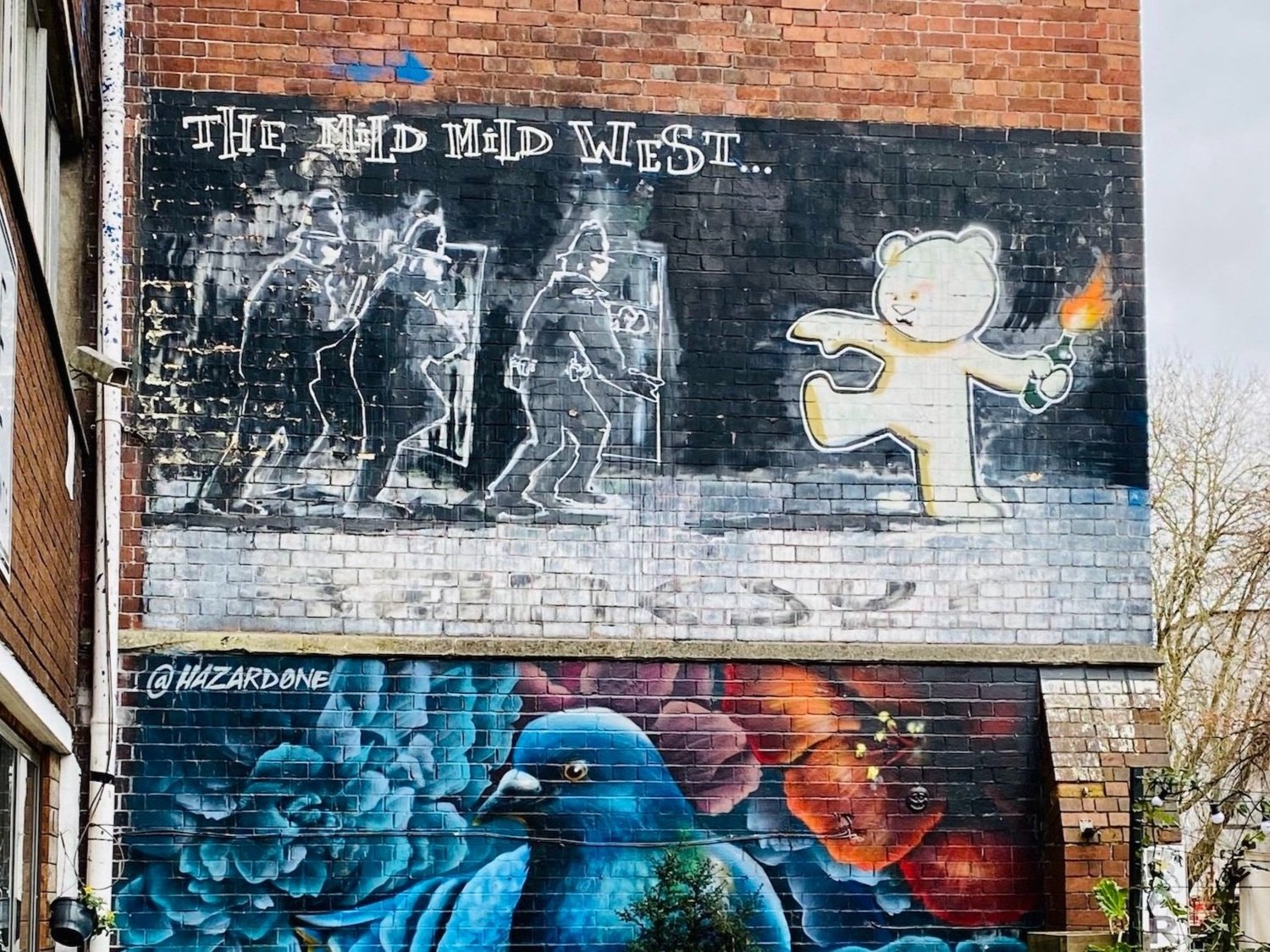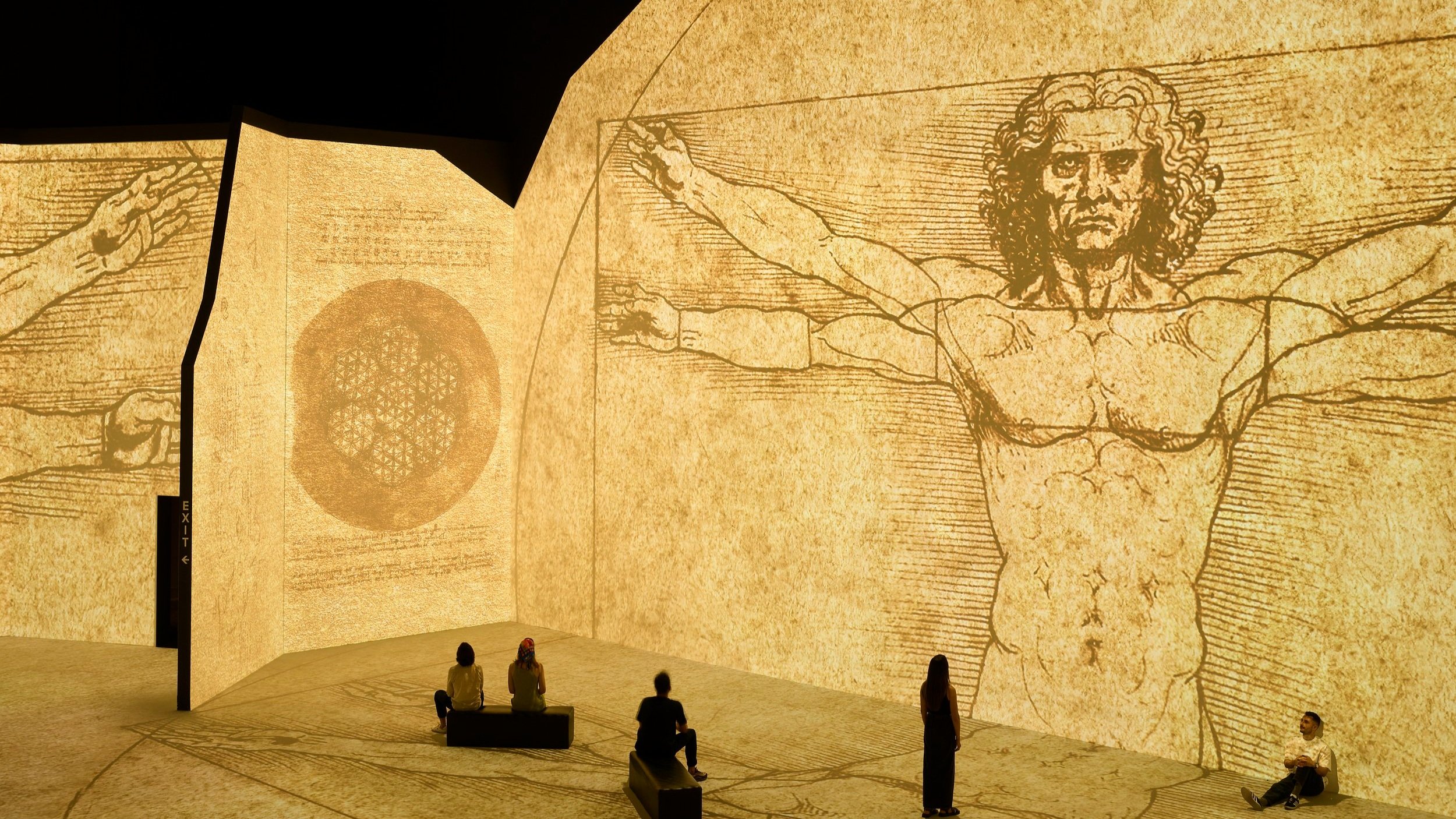What Does Georgia O’Keeffe’s Art Symbolise?
The pioneering American artist Georgia O’Keeffe is best known for her vibrant flower paintings, dramatic cityscapes, and Southwestern landscapes.
Though representational, O’Keeffe’s artworks are highly symbolic, inviting deeper interpretation beyond their surface beauty.
This art blog post will explore the core themes and symbolism underlying O’Keeffe’s seminal body of work, assessing the varying perspectives on how her artworks can be interpreted. It will provide insight into this groundbreaking artist and the subjective nature of artistic meaning.
Table of Contents
Georgia O'Keeffe's Modernist Floral Paintings
Georgia O'Keeffe's Animal Skulls
Georgia O'Keeffe’s Spirituality and Mysticism
Biomorphic Abstraction Revels in Natural Design
Georgia O'Keeffe's Identity and Sense of Place
Georgia O'Keeffe's Journey to Artistic Prominence
Common Questions About Georgia O'Keeffe's Art
My Final Thoughts: Georgia O'Keeffe's Visionary Artistic Legacy
Georgia O’Keeffe’s Modernist Floral Paintings
Georgia O’Keeffe was a modernist painter, renowned for her distinctive enlarged flower paintings.
Though she rejected efforts to prescribe specific meanings to her art, O’Keeffe’s flower pieces frequently evoke themes of femininity, sexuality, and organic abstraction. Her innovative floral works helped establish O’Keeffe as one of the most significant American artists of the 20th century.
Georgia O’Keeffe's Artistic Background and Style
O’Keeffe first gained attention in New York art circles during the 1910s for her vivid abstract charcoal drawings. By the 1920s, her flower paintings in oil on canvas catapulted her to fame in the modern art world.
O’Keeffe developed a unique style defined by sensual, biomorphic shapes and contours. She rendered flowers, bones, shells and other objects from nature in simplified, organic forms.
Her images often zoom in close on flowers, amplifying and isolating specific parts like petals, stamens and pistils. These tightly cropped depictions emphasise decorative patterning within the flower’s morphology. O’Keeffe’s manipulation of scale and cropping exemplifies her modernist approach of abstraction and distortion.
The Shock of the New: O’Keeffe's Floral Motifs
Blue and Green Music, 1921
While floral motifs had long been a traditional subject for female painters, O’Keeffe's radically zoomed-in, semi-abstract flowers shook up gender stereotypes in the male-dominated art world.
However, O’Keeffe resisted sexualised, Freudian analysis of her artworks. She insisted her aim was to reflect the essence of flowers through form and colour, not feminine erotic symbolism. Yet the organic shapes and suggestive contours in her floral still life’s exude an intimate, carnal sensuality.
Series 1, No. 8, 1918, Lenbachhaus, Munich
O’Keeffe’s flower paintings remain among the most innovative, evocative depictions of botanical subjects in 20th century art.
Flower Paintings Offer Feminine Sensuality
O'Keeffe's enlarged, kaleidoscopic flowers are widely considered to reference female genitalia.
The intimate folds and fleshy contours in pieces like Grey Lines with Black, Blue and Yellow imply a connection between floral anatomy and bodily pleasure. O'Keeffe captured the interior intricacy of flower morphology while amplifying its implicit eroticism.
Georgia O'Keeffe's monumental flower paintings are among her most iconic works. Works like Black Iris III (1926) feature large, velvety petals that take on a mesmerising, near-abstract quality.
Black Iris III (1926), Alfred Stieglitz Collection, Metropolitan Museum of Art
Many male critics like Sigmund Freud imposed sexualised readings onto O’Keeffe’s flowers, positing that their “feminine essence” stemmed from the female artist’s own psyche and repressed desires.
O’Keeffe bristled at this overtly Freudian analysis that reduced the spiritual and universal components of her art down to gender stereotypes. She stated,
“Nobody sees a flower - really - it is so small it takes time [...] I said to myself - I’ll paint what I see - what the flower is to me but I’ll paint it big and they will be surprised into taking time to look at it.”
While rejecting the notion that she intentionally crafted vulgar or feminist imagery, O’Keeffe acknowledged the emotional resonance and multi-layered symbolism that flowers held for her:
“I feel there is something unexplored about woman that only a woman can explore.”
Her aesthetic treatment of flowers as living, organic beings connects to feminine creative power, fertility cycles, and self-expression. Their abstracted, visual poetry transcends literal interpretations. Ultimately, O’Keeffe expanded notions of gender and sexuality in art through her singular, Modernist vision of nature’s forms.
Lasting Influence as a Visionary Modernist Artist
O’Keeffe’s revolutionary take on floral motifs had a lasting influence on modernism and abstraction. She was among the first American artists to advance radically simplified, non-representational forms. Her audacious magnification of flowers and plant parts encapsulates artistic modernism’s rupturing of tradition.
While O’Keeffe rejected labels, her Minimalism-antecedent focus on essential lines and shapes exemplifies pure abstraction.
Her prolific career pioneered new ways of distilling nature’s essence into art.
O’Keeffe’s provocative floral subjects and visionary approach created a uniquely feminine modernist aesthetic that still feels avant-garde today. Her flower paintings remain among the most renowned and iconic images of 20th century American art.
Georgia O’Keeffe’s Animal Skulls
In her austere New Mexican landscapes, Georgia O’Keeffe painted weathered animal skulls shed of all tissue.
O’Keeffe created a series of works featuring animal bones, particularly after moving to the desert landscapes of New Mexico in the 1940s. She would walk the arid terrain gathering sun-bleached bones she discovered, compelled by their abstract shapes and poetic associations.
O’Keeffe incorporated these bones, especially skulls, into stark yet evocative paintings.
The stark contrast between bleached bones and vacant desert vistas evokes the harsh impermanence of life in the desert. She abstracts skulls and antlers into sculptural symbols of the perpetual cycle between living growth and decadent decay.
The stripped-down shapes complement the desert’s barren beauty. Her bone paintings embody the ever-present possibility of death - a reminder of our own fragility.
Works like Ram’s Head White Hollyhock and Blue Morning Glory (1935) feature a ram’s skull set against either white flowers or blue blossoms. This juxtaposition symbolises the interplay between life and death, fertility and decay. As organic entities, the flowers represent growth, blossoming, and the regenerative power of nature. O’Keeffe’s isolated presentation of each form distils them to their essential elements.
Ram’s Head White Hollyhock and Little Hills, 1935, Brooklyn Museum, Fair Use
Together, the plant and animal remains create an exploration of the life cycle. There is a cyclical quality to how new life emerges from death.
As symbols, the bones reflect the continuum between living energy and mortal absence.
Georgia O’Keeffe’s Spirituality and Mysticism
While Georgia O’Keeffe rejected straightforward symbolic analyses of her work, she was deeply influenced by thinkers who believed abstract art could convey spiritual truths.
The ideas of Wassily Kandinsky, Arthur Wesley Dow and other modernists inspired her to find transcendent meaning in even representational subjects. O’Keeffe stated:
“Nothing is less real than realism. Details are confusing. It is only by selection, by elimination, by emphasis that we get at the real meaning of things.”
Works like Sky Above Clouds IV (1965) feature magnified views of the sky that take on an abstract, almost cosmic quality. The swirling blues and violets, and implied perspective looking down at the clouds, evoke mystical sensations of floating and getting lost in the heavens.
O’Keeffe’s painting withdraws from the observable world in order to capture a transcendent essence. Other landscapes dramatise the meeting of earth and sky, suggesting the metaphysical dualities of matter and spirit, tangible and intangible.
Additionally, O’Keeffe’s use of colour, simplified shapes, and varied scale indicate her desire to reveal the spiritual qualities embedded in nature’s forms.
Canyon with Crows, 1917
She presents flowers, bones, rocks and landscapes in semi-abstract ways that convey their power. O’Keeffe renders visible realities as portals into the invisible - into vital forces greater than physical existence.
Biomorphic Abstraction Revels in Natural Design
O’Keeffe’s seashell paintings highlight the splendidly abstract designs within nature.
Works like Abstraction Sea Shell portray shells as sensuous, swirling organic shapes.
O’Keeffe transforms spiral chambers into hypnotic biomorphic patterns, showcasing the marvellous hidden forms underlying mundane objects.
Her vision showcases the fantastical essence within ordinary natural items. O’Keeffe’s celebration of nature’s abstract geometry pushed organic form to new levels of minimalist perfection. She portrays the natural world not as something to literally reproduce, but as inspiration for revealing inner sources of creative energy.
Georgia O’Keeffe’s Identity and Sense of Place
In addition to broader symbolic themes, Georgia O’Keeffe’s art reflects her profound connection to specific landscapes that shaped her identity and artistic vision.
Lake George Reflection, 1921
She was raised on a Wisconsin farm and maintained a lifelong appreciation for the rural topography and seasonal changes of the Midwest. This sensibility appears in the naturalism of her early charcoal drawings and watercolours.
Later, when O’Keeffe began spending part of each year in New Mexico starting in 1929, its arid vistas offered a stark contrast to the verdant Wisconsin settings of her youth.
The desert terrain, from the bleached animal bones to the layered mesas, cliffs, and erosion patterns, spoke to O’Keeffe’s Modernist impulse to render nature in semi-abstract ways. She distilled the shapes and colours of the Southwest into essential geometric forms.
After settling permanently in New Mexico in 1949, emblematic paintings like Black Place III (1944) crystallise O’Keeffe’s emotional and artistic identification with this landscape. The jagged cliffs, sparse vegetation, and bones evoke the heat, harshness, and wonder of the desert.
O’Keeffe’s artistic identity was profoundly shaped by the places she inhabited - both the rolling hills of Wisconsin and the austere beauty of New Mexico. Her ability to capture a sense of oneness with these terrains remains a core part of her legacy.
Georgia O’Keeffe’s Journey to Artistic Prominence
Georgia O’Keeffe’s road to becoming one of America’s most famous modernist painters had its share of highs and lows.
She swiftly rose to fame in the 1920s avant-garde art scene, but suffered setbacks due to gender bias and mental health issues. O’Keeffe persevered to gain renown for her visionary artistic style.
Early Success and Growing Fame in the 1920s
O’Keeffe first captured the art world’s attention with her large-scale flower paintings like Black Iris, which were exhibited in New York in the 1920s. Her radically cropped, sensual floral images were unlike anything most critics had seen from a female painter. She soon gained fame for advancing a pioneering modernist aesthetic.
Major exhibitions of O’Keeffe’s work in New York cemented her celebrity status and reputation as an innovative artist. However, the label of “woman artist” led to misjudgements of her work as quaint or sentimental. O’Keeffe resisted such gender stereotyping and insisted her art be assessed on its own merits.
Depression and Artistic Hiatus in the 1930s
In the early 1930s, O’Keeffe suffered an emotional breakdown and was hospitalised for depression.
She did not paint for over a year as she recovered her mental stability. This hiatus stalled her rising career trajectory. However, in 1934 O’Keeffe revived her creativity during a trip to New Mexico. Its austere beauty inspired her and she soon made it her permanent home.
O’Keeffe found solace in the isolated high desert, which became her muse.
Her time in New Mexico renewed her commitment to abstraction by distilling nature’s essence. By the late 1930s, she was productively painting again.
Lasting Influence as a Pioneer of American Modernism
Though the art world had dismissed her during her silent period, O’Keeffe’s perseverance led to wide acclaim by the 1940s.
Major retrospectives celebrated her paintings and drawings. She continued creating into her late 90s, gaining international fame.
O’Keeffe’s independent spirit and visionary art broke conventions. Her uniquely American modernist aesthetic inspired new generations of abstractionists. She pioneered a feminist voice in the male-dominated Expressionist movement.
O’Keeffe’s lasting influence was enshrined when she was awarded the Presidential Medal of Freedom in 1977.
Common Questions About Georgia O’Keeffe's Art
Georgia O’Keeffe’s distinctive modernist art provokes many questions about her style, artistic themes, career achievements, and legacy. Here we explore some common FAQs regarding her paintings and life.
Georgia O’Keeffe’s Style and Motifs
1. What painting medium did O’Keeffe use most?
Georgia O’Keeffe primarily worked in oil paints on canvas to achieve vivid colours and texture. She also produced drawings in charcoal and pastels.
2. What style is her art categorised as?
Georgia O’Keeffe is known for modernism, abstraction, and minimalism for simplifying nature into essential forms.
3. Why did she focus on painting enlarged flowers and animal skulls?
Georgia O’Keeffe focused on painting the details of flowers to bring an often overlooked subject to the viewers attention, they also represent the feminine experience. Skulls symbolise impermanence and the cycle of life/death.
4. How did she render flowers and other objects abstractly?
Georgia O’Keeffe cropped her subjects tightly, exaggerated form and colour, and distilled shapes to amplify pattern and design.
Georgia O’Keeffe’s Career and Achievements
5. What is O’Keeffe’s most expensive painting?
Georgia O’Keeffe’s Jimson Weed/White Flower No. 1 sold for US$44.4 million in 2014, a record for a work by a female artist.
6. Approximately how many artworks did she produce in her lifetime?
Georgia O’Keeffe created around 2,000 works including paintings, drawings, and sculptures over 7 decades.
7. Where can her prominent paintings be viewed?
Georgia O’Keeffe’s works are in major museum collections like the Georgia O'Keeffe Museum, Santa Fe and the Museum of Modern Art (MoMA), New York. For more locations where you can view O’Keeffe’s artworks, please read here.
8. What are her top accolades and honours?
Georgia O’Keeffe received the Presidential Medal of Freedom and the National Medal of Arts. She was the first female artist honoured with a retrospective at MoMA.
9. How did O’Keeffe influence modern art movements?
Georgia O’Keeffe helped advance modernist ideas of abstraction, Minimalism, and non-objective art in America.
10. What was Georgia O’Keeffe’s lasting impact on feminist art history?
Georgia O’Keeffe broke gender barriers as an innovative modernist painter in the male-dominated art world.
11. Why is Georgia O’Keeffe considered a visionary artist?
Her singular style and vision uncovered hidden aspects of nature, creating images of enduring power.
My Final Thoughts: Georgia O’Keeffe’s Visionary Artistic Legacy
Georgia O’Keeffe was a true visionary whose modernist art revealed the deeper essence within natural forms. Her pioneering images explore feminist themes of sexuality, intimacy, life cycles, and mortality through sensual, biomorphic shapes.
O’Keeffe was a pioneer who advanced ideas of modernism, minimalism and pure abstraction in America. She subverted traditional gender roles and pioneered a bold feminist voice in the male-dominated Expressionist art movement.
We can learn from O’Keeffe’s perseverance as this led to wide acclaim and international fame.
O’Keeffe’s singular perspective and innovative vision unfettered by convention remain an inspiration. Her legacy resides in revealing nature’s hidden meanings and energies. O’Keeffe’s provocative art compels us to appreciate the marvellous symbols and designs ever-present in the natural world if we open our eyes to truly see.
I hope you have found this blog post about Georgia O’Keeffe interesting. To find out where to view her artworks, please read her.
If you would like to get in contact, please email me at sarahransomeart@gmail.com.















